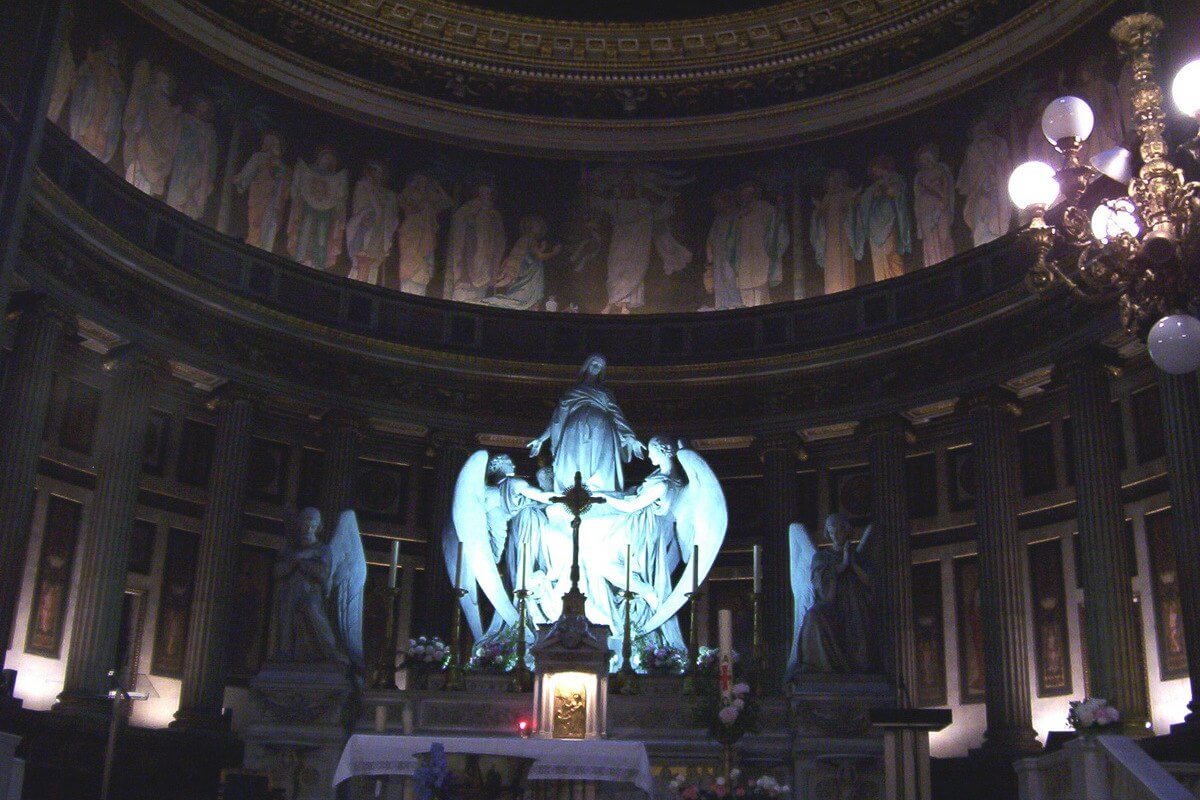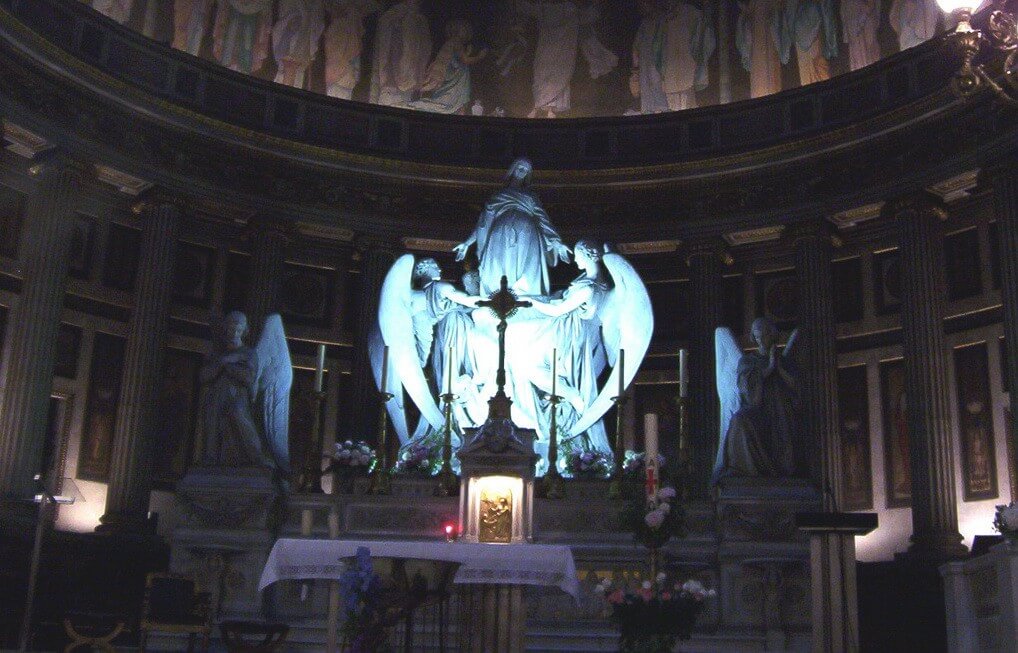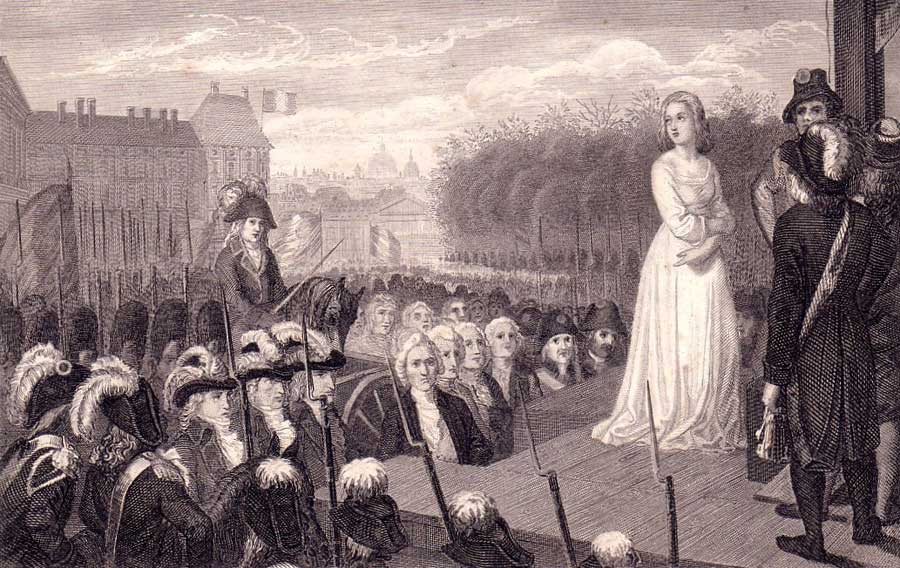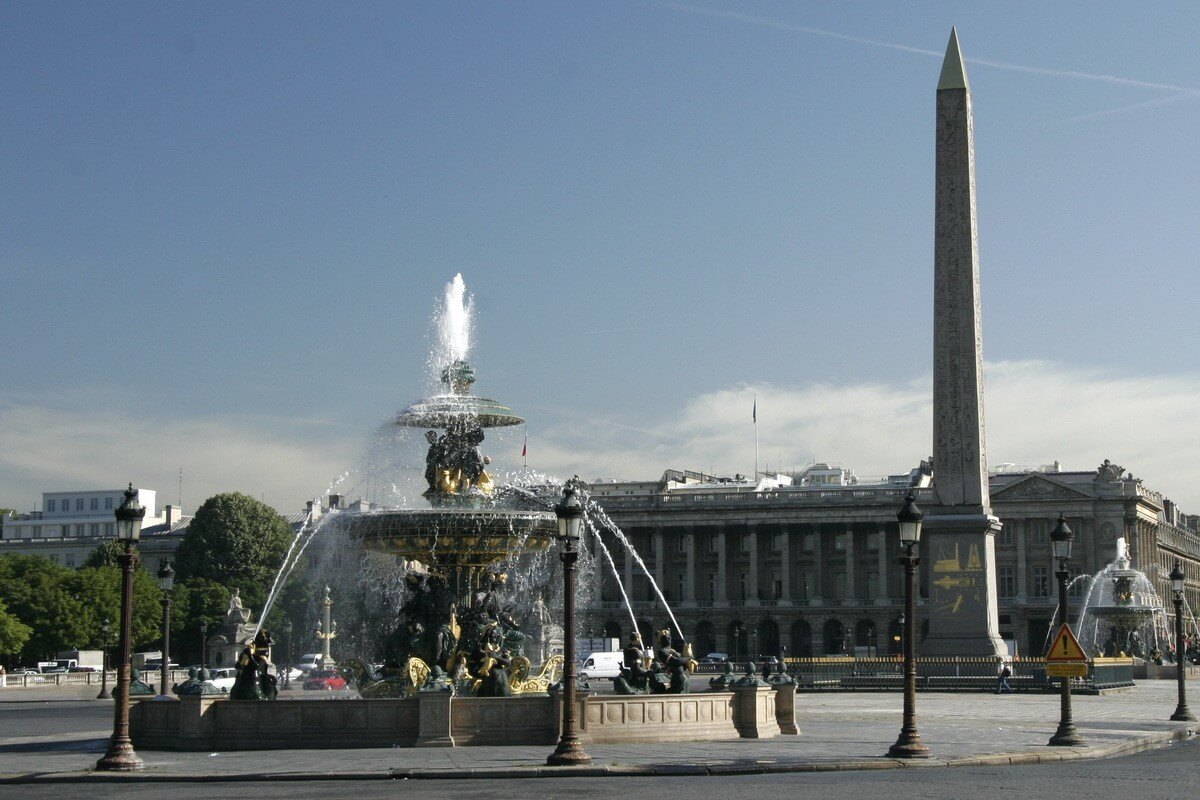Our Walk Through History In Paris
Bob and I began our second day in Paris, France, with a visit to the Roman Catholic church La Madeleine located at the very top of rue Royale. With its massive Corinthian columns, La Madeleine Church occupies a commanding position at the end of the street, and I remember being awed when I first caught sight of it. This church has a very interesting history.
As Bob and I approached the front of the church, we were amazed at the colossal size and structure of the building. It actually looks more like a courthouse, probably because it began its life, not as a church, but as a memorial to the glory of Napoleon’s army. Napoleon had it designed and built to commemorate his soldiers who had fallen in battle. The building only became a Roman Catholic Church years after the fall of Napoleon’s Empire.
As we would learn, this Christian church sits where once a former Jewish synagogue stood. In 1182, the site was seized from the Jewish community, and the land was then consecrated in memory of Mary Magdalene. It was at that time that plans were put forward to someday build a church on the site.
The interior of the building is stunning, but back at the start of the French Revolution in 1789, all that was in place was a foundation and no walls. With the revolution in full swing, the government of the day couldn’t decide what to do with the site. Would it be a ballroom, a library, or perhaps a marketplace? Well, in 1806, Napoleon Bonaparte decided it would not be a church, but a building to glorify his army.
The paintings and statues that reside there today are nothing short of marvelous. An interesting side point about this location is that in 1793, in the midst of the French Revolution, and just moments after King Louis XVI was guillotined down the street, it was to this property that his body was brought for a very short memorial service.
With the fall of Napoleon’s Empire and the return of the French Royal Family to power under King Louis XVII, the building was finally dedicated to Mary Magdalene and then consecrated as a Roman Catholic Church in 1842.
From La Madeleine church, Bob and I decided to walk straight down the street to Place de la Concorde, a square that was once known as the Place de la Revolution.
In this photo, the front of La Madeleine Church is still visible sitting at the top of rue Royale. The present day water fountain and obelisk sit in what was once called the Place de la Revolution. In fact, the obelisk sits right on the spot where people were guillotined. Among those was King Louis XVI who was beheaded at that spot, with his body and head being carried up rue Royale to the site of La Madeleine Church for his very quick and unpretentious funeral. As an insult, he was buried with his head next to his feet.
When this square was first designed and built in 1755, it was called Place Louis XV as an honor to the King of that time. This square has had many names!!! During the French Revolution, it became known as Place de la Revolution, then after the revolution, it was renamed Place Louis XV, then Place Louis XVI, then Place de la Chartre, and finally, in 1830, it was renamed Place de la Concorde, as it is still known today.
King Louis XVI was executed in Place de la Revolution on January 21, 1793.
King Louis XVI was the only French King ever to be executed.
Ten months later, on October 16, 1793, Queen Marie Antoinette was also put to death by guillotine in Place de la Revolution.
Given the beautiful setting where we stood, with a blue sky as backdrop to the sounds of the water splashing in the fountain, it was difficult for Bob and I to imagine this place once filled with thousands of people cheering on the execution of the more than 1300 people who were publicly beheaded here. Ironically, the giant Egyptian Obelisk of Luxor, that once stood in an Eygptian desert as a symbol of honour facing the Tomb of Pharoah Ramesses II, now stands forever on the spot where another King and his Queen were brought to their end.
In 1863, King Louis Philippe of France had the 3300-year-old Obelisk of Luxor placed on the very spot where King Louis XVI and Queen Marie Antoinette were executed.
While in Eygpt, at the entrance to the Amon temple at Luxor, the matching obelisk stands where it has always stood for the past 3300 years, and an empty stone pedestal is all that remains of the twin Obelisk that now sits in Paris.
From Place de la Concorde and the Obelisk of Luxor, Bob and I were drawn to the Tuileries Gardens by the promise of great things secured behind the impressive gilded entrance gates that were glittering in the sun. A massive octagonal-shaped pool dominates the one end of the gardens where endless numbers of patio chairs are made available to the public.
The Tuilieres Gardens were originally built in 1559 by Queen Catherine de Medicis. She created a world of fountains and formal gardens. Two hundred and thirty years later, during the Revolution, her Tuilieres Gardens were partially destroyed when rampaging mobs massacred the King’s Swiss guard among the hedgerows and fountains.
All that remains of her garden are the semicircular low walls of the perimeter that butt up against either side of the gilded entrance gates.
West of the octagonal-shaped pool are the restored gardens. The breadth of the promenade speaks to the grandeur of this once grandiose outdoor space. Bob and I were totally mesmerized by the place and inadvertently stepped into more than one puddle as we gazed about in wonder.
Although the tulips had finished blooming, there were still many showy spring flowers such as these purple irises that provided a burst of colour below the imposing edifice of the Louvre.
The cultivated flowers and manicured hedges were punctuated by various sculptures such as this one called “Nymphe”, which was carved by Louis Auguste Leveque.
The top facade of the Louvre building is quite the piece of art. It is fashioned from slate, metal, and various decorative sculptures. We learned that the sculptures and decorative panels, like those in so many places across the world, are being damaged as a direct result of air pollution. In Paris, the main contributor to air pollution is vehicular fumes stemming from the use of diesel fuel.
Like we have seen in so many different cities around the globe, action is being taken to save the intricate work on historic buildings. In the case of the Louvre, a 30-year program is underway to clean and repair the wonderful artistic exterior facades of the building, as seen here in this photograph.
This aerial photo of the Louvre gives you a good view of the complete building and monstrous complex. The glass pyramid has a commanding position in the centre court. On the right side of the photo, a number of hedges direct your attention to the Arc du Carrousel.
The Arc du Carrousel is a massive pink marble structure that celebrates Napoleon’s military victories of 1805. Bob and I couldn’t get over how much it resembles the Arc de Triomphe sitting a few blocks away. Once we learned that both monuments were commissioned by Napoleon, we quickly understood the similarities.
The construction of triumphal arches was a very common thing across Europe. On one trip to Berlin, Bob took this photo of the Brandenburg Gate, which is, of course, one of the most famous landmarks in Germany. Unlike Napoleon’s Arc du Carrousel that celebrates victory in war, the Brandenburg Gate was built by King Friedrich William II as a symbol of peace.
Nevertheless, atop the Brandenburg Gate is the Quadriga, a chariot being drawn by four warhorses and driven by Victoria, the Roman goddess of victory.
Back in Paris, topping Napoleon’s Arc du Carrousel, is a replica of the original “Triumphal Quadriga of Horses of St Mark’s” that once held this place of pride. Since the fall of Constantinople in 1204, the original Quadriga of Horses of St Mark’s had sat in Venice in front of St Mark’s Basilica. But in 1797, Napoleon had that Quadriga of Horses forcibly removed from the basilica and then carried away as spoils of war. In Paris, it was placed on top of his new Arc du Carrousel. With Napoleon’s final defeat at the Battle of Waterloo, that Quadriga of Horses was taken down and returned to Venice. Interestingly, what war could not accomplish, air pollution finally has. Because of ongoing damage from acid rain, the original “Triumphal Quadriga of Horses of St Mark’s”, in Venice, has been removed to the interior of the Basilica of St Mark’s to preserve it while a replica replaces it out front.
After checking out the Arc du Carrousel, Bob and I walked towards the Louvre where we could clearly see the large glass and metal pyramid that now sits in the main courtyard of the complex. Although we didn’t head inside to peruse the art, we could have gained entrance through the large glass pyramid which serves as the Art Musuem’s main entrance.
No tour of Paris would be complete without a visit to the prominent building housing the Tomb of Napoleon Bonaparte. It was necessary for Bob and I to cross the River Seine to get to Les Invalides, a prestigious dome-topped building with a gold roof.
Les Invalides was commissioned by King Louis XIV in 1670 as a hospital for sick soldiers. The building above, topped with the golden dome, is called the Chapel of Saint-Louis-des-Invalides, and it was built in 1679.
Les Invalides is a sprawling collection of many buildings. The building on the far right is the Chapel mentioned above. Moving left of the Dome, you have various buildings that house a hospital and a retirement home for war veterans, a military museum that has the complete military history of France, and then back in the basement of the Domed Chapel is the Tomb of Napoleon Bonaparte.
A dramatic painting covers the ceiling of the dome that looks down on the tomb of Napoleon. It was painted by Charles de La Fosse who was born in Paris; he is considered one of France’s most important artists. When Bob and I visited, the luminescence of the mural was accentuated by the rays of sunshine pouring in through the circle of windows.
Overlooking the courtyard behind the Chapel of Saint-Louis-des-Invalides is this statue of Napoleon in his classic stance.
The uncovered crypt that holds Napoleon Bonaparte’s tomb is in the basement of the building. The following quotation is inscribed above the entrance to his tomb: ” I wish my ashes to rest on the banks of the Seine among the people of France whom I so much loved”. Napoleon’s body rests herein. Bob and I found the place very peaceful and thought-provoking with the warm glow of the sun filtering down on us from above and the dense silence almost deafening us.
Napoleon is not the only person who is buried at Les Invalides. Several of France’s most important military heroes, along with Napoleon’s son, Napoleon II, and also his brothers, Joseph and Jerome Bonaparte, are also interred in this building.
Frame To Frame – Bob and Jean










































What a stunning and splendid post — it made me very homesick for Paris and I’m looking forward to your others. As many times as we went past and around the Place de la Concorde, we never did go close enough, so I really appreciate your detail. And the Louvre/Tuileries photos — splendid. Oh, they all are!
We really appreciate your comments. Seeing as that was our first visit to Paris, and France, we weren’t able to see all of the sights that invite investigation, but someday, we hope to return.
Whoah, I’ve never seen La Madeleine with that kind of dramatic lighting, it looks splendid. You were lucky! 🙂 Great stuff.
thanks, Alex. On the day we arrived in Paris, it was drizzling rain, but Bob and I headed out for our first walking tour anyways. When one heavier downpour swept in on us, Bob and I ducked into La Madeleine for cover and were surprised to find such a beautiful refuge.